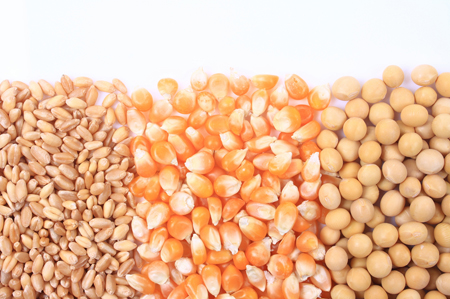Reports Show Increase in Corn Planting, Adding Volatility to Agriculture Markets
 (Wall Street Journal) – CHICAGO—U.S. farmers are planting more corn and soybeans even as the nation’s stockpiles swell, according to twin government reports Thursday that are set to stoke more volatility in agriculture markets.
(Wall Street Journal) – CHICAGO—U.S. farmers are planting more corn and soybeans even as the nation’s stockpiles swell, according to twin government reports Thursday that are set to stoke more volatility in agriculture markets.
If Midwest weather cooperates, farmers this year are expected to raise one of the largest corn crops on record after switching fewer acres than expected to soybeans.
The move heaps more pressure on an agricultural sector already grappling with lower farmer incomes and sales of farm equipment and supplies.
Corn futures fell almost 4% by Thursday’s market close and have slid by 18% from their peak earlier this month, while soybeans continue to rally.
The latest updates on crop planting and supplies from the Agriculture Department sets up a potentially volatile summer for agricultural markets. Yields could be damaged if sweltering weather appears later in the growing season.
“If hot, dry weather continues to prevail, fireworks will continue in the grain markets long after July 4th,” said Terry Reilly, an analyst at brokerage Futures International LLC in Chicago.
The U.S. Department of Agriculture estimated U.S. farmers have planted 94.148 million acres of corn, topping the 92.759 million forecast by analysts and the agency’s own March projection for 93.601 million.
The additional corn came despite a steep rally in soybean prices, which analysts had expected to prompt a switch between the crops. Prices for the oilseeds have surged about 25% since the USDA’s March forecast as poor weather in South America damaged harvests there and raised hopes for U.S. export demand.
“Producers did not react fast enough to the price spike in beans,” said Mike Zuzolo, president of Global Commodity Analytics, adding that a drop in fertilizer prices was also a factor. “Fertilizer prices went down and producers jumped at the chance for more yield,” he said. Corn typically produces many more bushels per acre than soybeans and wheat.
Higher corn prices, an early start to planting and largely favorable spring weather also encouraged growers to seed more corn area.
Corn futures for July delivery dropped 14 cents to $3.58¾ a bushel at the Chicago Board of Trade, the 3.8% decline marking the lowest settlement price since Apr. 11.
Government data showed there is also ample grain left in storage across the U.S. Farm Belt. In a quarterly report on crop inventories, the USDA said domestic corn supplies on June 1 totaled 4.722 billion bushels, the largest amount in 28 years. That topped analyst expectations for 4.528 billion and compares with 4.453 billion bushels at the same point last year after the third-largest harvest on record.
Soybean futures rose to a three-week high after the USDA said domestic growers seeded fewer oilseed acres than analysts had anticipated.
The USDA said farmers planted a record 83.688 million acres of soybeans this year, though that fell short of the 83.969 million forecast by analysts. The smaller-than-expected acreage estimate also comes as global demand for the oilseeds remains robust, putting the spotlight on August weather, which is crucial for determining yields. Analysts said strong U.S. yields will be required to satiate voracious global appetite for soybeans.
Soybean inventories at the start of the month totaled 869 million bushels, up from 627 million a year earlier, according to the USDA.
Soybean futures for July delivery climbed 30 1/2 cents to $11.75 a bushel, the 2.7% rise marking the highest closing price since Jun. 10.
Wheat futures initially sank to a nine-year low after the USDA projected larger plantings of that crop, but later rebounded as traders determined bearishness had largely been priced into the market.
The agency said all-wheat planting will total 50.816 million acres, higher than the government’s previous forecast for 49.559 million acres.
Wheat stockpiles also rose to a 28-year high of 981 million bushels at the beginning of the month, just shy of analysts’ expectations.
Wheat futures for July delivery gained 1¾ cents to $4.31¼ a bushel, reversing an earlier decline that had driven prices for the grain to the lowest level since Apr. 2007.
Forecasts for heavy rains in the U.S. southern Plains, which could delay harvest activity and reduce crop quality, also helped buoy wheat prices.




